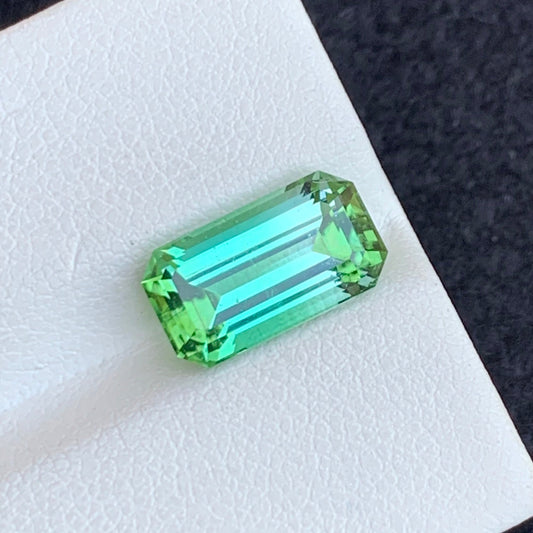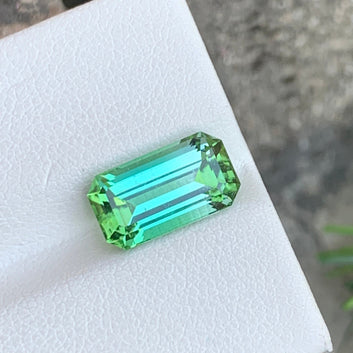Tourmaline Cut
Tourmaline stones are a captivating group of gemstones renowned for their remarkable variety of colors and intricate crystal formations. These stones belong to the mineral group tourmaline, which comprises several closely related mineral species sharing a similar chemical composition. With their dazzling hues and distinct crystalline structures, tourmaline stones have fascinated gem enthusiasts and collectors for centuries.
Filters
- Featured
- Best selling
- Alphabetically, A-Z
- Alphabetically, Z-A
- Price, low to high
- Price, high to low
- Date, old to new
- Date, new to old
What is tourmaline?
The name Tourmaline is derived from Turamali, which is thought to mean "stone with mixed colors." Color is king for tourmaline, which is found in more shades and hues than any other gem. It varies in transparency and color to a substantial extent. Crystals of tourmaline may be of different colors in different portions or uniform color throughout, which makes them appealing.
Tourmaline is a mineral and gemstone that is known for its wide variety of colors, including black, brown, green, pink, and blue. It is a complex mineral that contains a range of elements, including aluminum, iron, magnesium, and lithium. Tourmaline is a semi-precious gemstone that is known for its wide range of colors.
-
Origin and mining: Tourmaline is found in many parts of the world, including Brazil, Afghanistan, Pakistan, and the United States. It is typically mined from pegmatite deposits or from alluvial deposits in rivers and streams.
-
Color and variety: Tourmaline comes in a wide variety of colors, including black, brown, green, pink, and blue. It can also be colorless or transparent. Tourmaline can have a range of different chemical compositions, which can affect its color and other properties.
-
Durability: Tourmaline is a relatively hard and durable gemstone, with a Mohs hardness rating of 7-7.5. This makes it well-suited for use in jewelry, where it can withstand daily wear and tear.
-
Jewelry uses: Tourmaline is a popular gemstone for use in jewelry, including rings, necklaces, bracelets, and earrings. It is prized for its range of colors and its durability, and can be cut into a variety of shapes and sizes.
-
Spiritual and healing properties: As mentioned earlier, tourmaline is believed to have a number of spiritual and healing properties, depending on its color. For example, black tourmaline is believed to help with grounding and protection, while green tourmaline is believed to help with physical healing and regeneration.
Tourmaline Stones Description
Tourmaline is a versatile and popular gemstone that is prized for its range of colors and its durability. Whether you are looking for a piece of jewelry or seeking to benefit from its spiritual and healing properties, tourmaline is a fascinating and beautiful gemstone.
One of the most interesting things about tourmaline is its ability to become electrically charged when heated or rubbed. This property, known as piezoelectricity, makes tourmaline useful in a range of technological applications, including pressure sensors, microphones, and other electronic devices.
Tourmaline is a popular gemstone for use in jewelry, and can be cut into a variety of shapes and sizes. It is prized for its range of colors and its durability, and is often used in rings, necklaces, bracelets, and earrings. The value of tourmaline depends on a number of factors, including the color, clarity, and size of the gemstone.








































